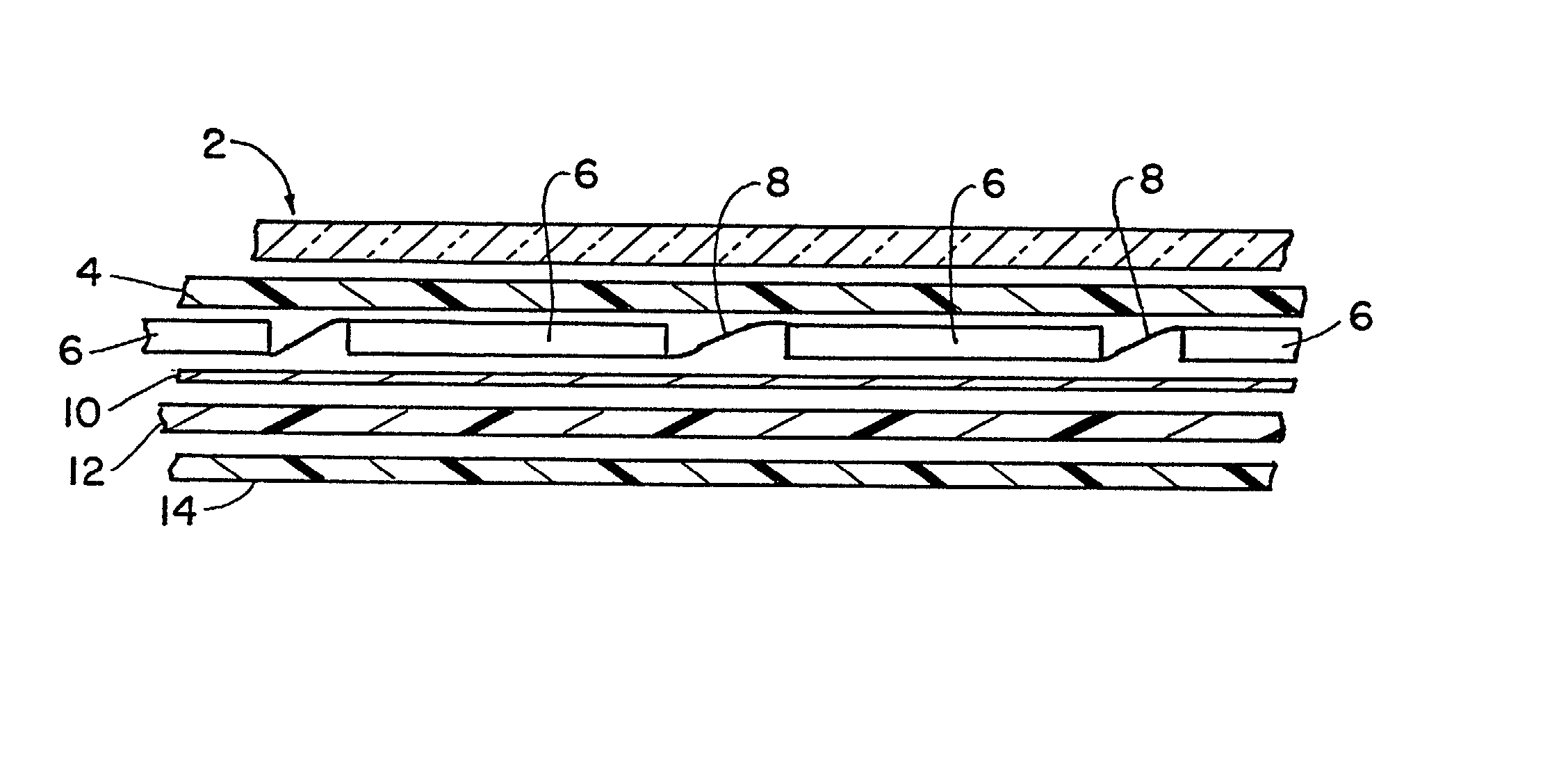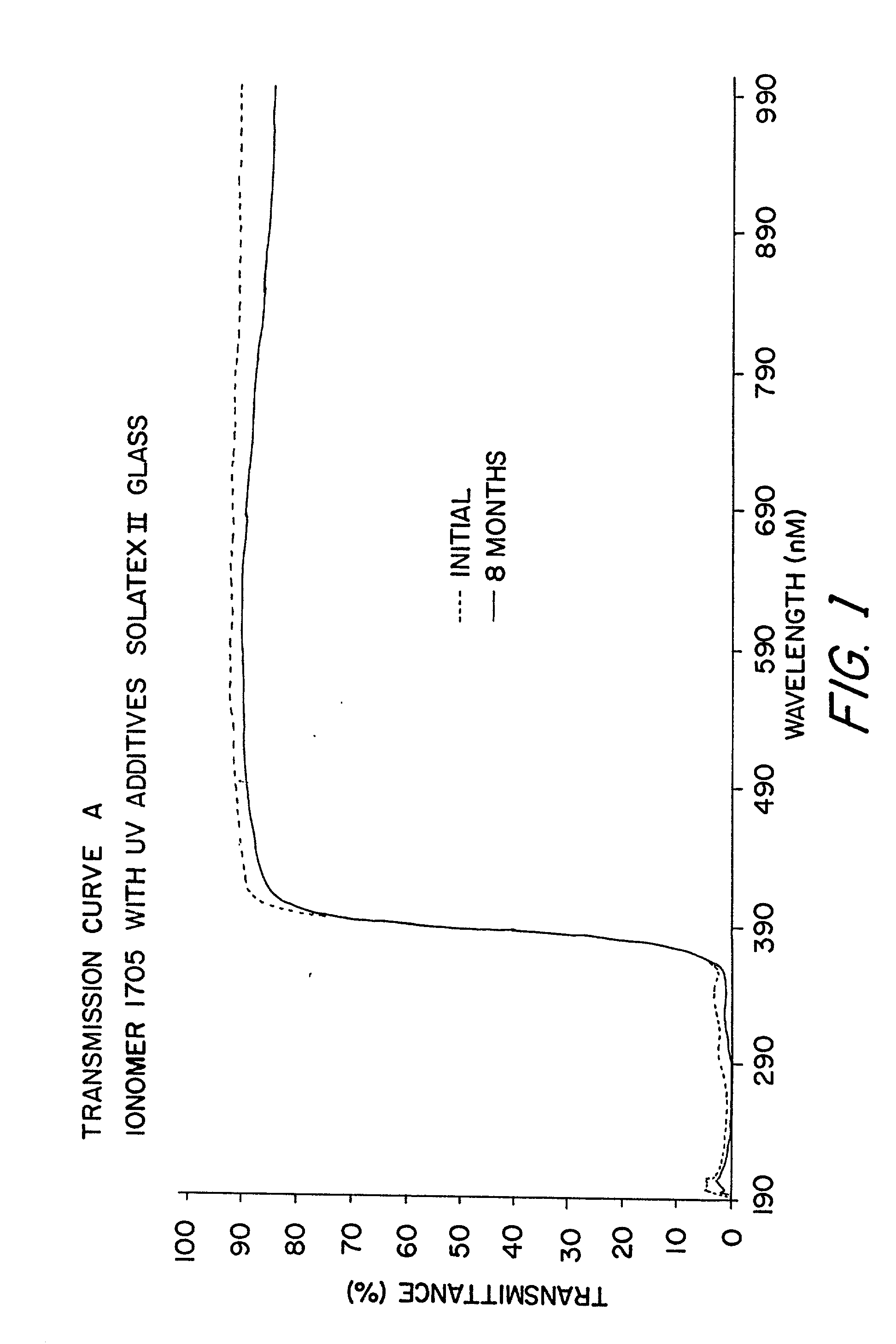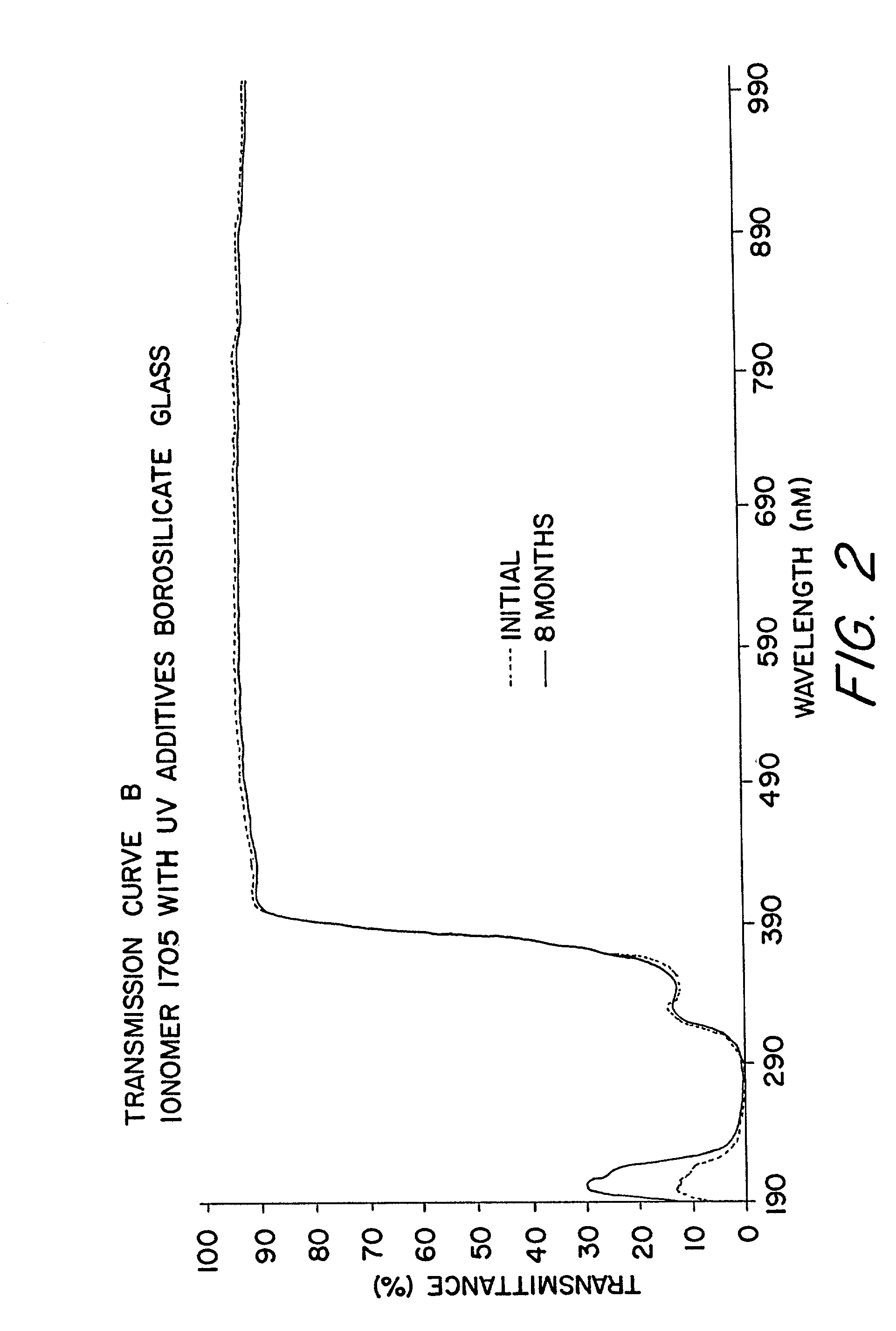Encapsulated photovoltaic modules and method of manufacturing same
a photovoltaic module and encapsulation technology, applied in the direction of layered products, pv power plants, chemical instruments and processes, etc., can solve the problems of acid reaction discoloration and other problems, and achieve the effect of improving the useful life of laminated photovoltaic solar cells
- Summary
- Abstract
- Description
- Claims
- Application Information
AI Technical Summary
Benefits of technology
Problems solved by technology
Method used
Image
Examples
example
[0030] A sheet of tempered solar grade CeO-free glass, having a thickness of {fraction (3 / 16)} inch, is placed face down on a supporting surface. Two 0.010 inch thick corona-treated sheets of Surlyn 1705 zinc based ionomer, modified with 0.30% Chimasorb 944 and 0.30% Tinuvin 328, are placed over the top surface of the glass sheet. An array of inter-connected silicon solar cells made from rectangular polycrystalline EFG-grown wafers is placed on top of the two Surlyn sheets, with the front contacts of the cells facing the glass sheet. The conductors interconnecting the solar cells have been soldered to the front and back contacts of the cells using a tin / silver solder as prescribed by Gonsiorawski in U.S. Pat. No. 5,074,920, and an acidic carboxylate flux. The ionomer sheets are oriented so that the corona-treated surface of one sheet engages the glass sheet, and the corona-treated surface of the second sheet faces the array of solar cells. A scrim layer with a thickness of about 0.0...
PUM
| Property | Measurement | Unit |
|---|---|---|
| Pressure | aaaaa | aaaaa |
| Angle | aaaaa | aaaaa |
| Angle | aaaaa | aaaaa |
Abstract
Description
Claims
Application Information
 Login to View More
Login to View More - R&D
- Intellectual Property
- Life Sciences
- Materials
- Tech Scout
- Unparalleled Data Quality
- Higher Quality Content
- 60% Fewer Hallucinations
Browse by: Latest US Patents, China's latest patents, Technical Efficacy Thesaurus, Application Domain, Technology Topic, Popular Technical Reports.
© 2025 PatSnap. All rights reserved.Legal|Privacy policy|Modern Slavery Act Transparency Statement|Sitemap|About US| Contact US: help@patsnap.com



